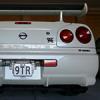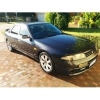Differences between rb26 blocks (r32/r33/r34)
Announcements
-
Similar Content
-
Latest Posts
-
The title should have posted "EFR7670 exhaust housing selection RB26" I can seem to edit thr title on my Android.
-
I'm looking for some real world experiences/feed back from anyone who has personally ran a EFR7670 with a 1.05 exhaust housing or a .83 I'm leaning towards the .83 because its a street car used mostly for spirited driving in the canyons roads. I"m not looking for big numbers on paper. I want a responsive powerband that will be very linear to 8000 rpm. I dont mind if power remains somewhat flat but dont want power to drop off on top. The turbo I've purchased is a 1.05, although the mounting flange T3 vs T4 and internal vs external waste gates are different on both housings, I not concern about swapping parts or making fabrication mods to get what I want. Based on some of the research I've done with chat gpt, the 1.05 housing seems to be the way to go with slightly more lag and future proofing for more mods but recommends .83 for best response/street car setup. AI doesn't have the same emotions as real people driving a GTR so I think you guys will be able to give me better feed back 😀
-
Surely somebody has one in VIC. Have you asked at any shops? Is this the yearly inspection or did you get a canary?
-
This is where I share pain with you, @Duncan. The move to change so many cooling system pieces to plastic is a killer! Plastic end tanks and a few plastic hose flanges on my car's fail after so little time. Curious about the need for a bigger rad, is that just for long sessions in the summer or because the car generally needs more cooling?
-
So, that is it! It is a pretty expensive process with the ATF costing 50-100 per 5 litres, and a mechanic will probably charge plenty because they don't want to do it. Still, considering how dirty my fluid was at 120,000klm I think it would be worth doing more like every 80,000 to keep the trans happy, they are very expensive to replace. The job is not that hard if you have the specialist tools so you can save a bit of money and do it yourself!
-




Recommended Posts
Create an account or sign in to comment
You need to be a member in order to leave a comment
Create an account
Sign up for a new account in our community. It's easy!
Register a new accountSign in
Already have an account? Sign in here.
Sign In Now